Introduction
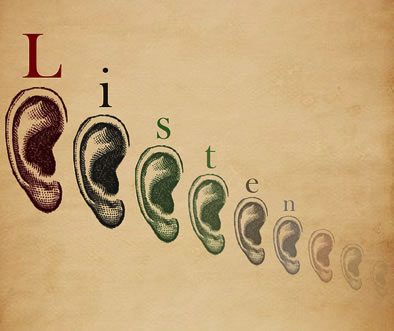 Image by Ky_Olsen, ©2008
Image by Ky_Olsen, ©2008Listening is a skill most people think they do well, but that often could be improved. As you complete high school and go on to college and the workforce, listening effectively will become more important. In college, many of your courses will be lecture-based with an instructor speaking for an hour or more, stopping infrequently for his or her listeners to catch up. Yikes! The assumption is that you are prepared to listen and take accurate notes.
When you enter the workforce—you may already have—you will likely attend meetings where you are assigned tasks or given instructions to follow by your boss. You might also attend conferences where you are expected to report back about what you heard and saw. Many times presenters at seminars, workshops, and conferences provide handouts for you to follow, but you still need to be able to listen carefully and take accurate notes in order to remember the points in the presentation when you get back home.
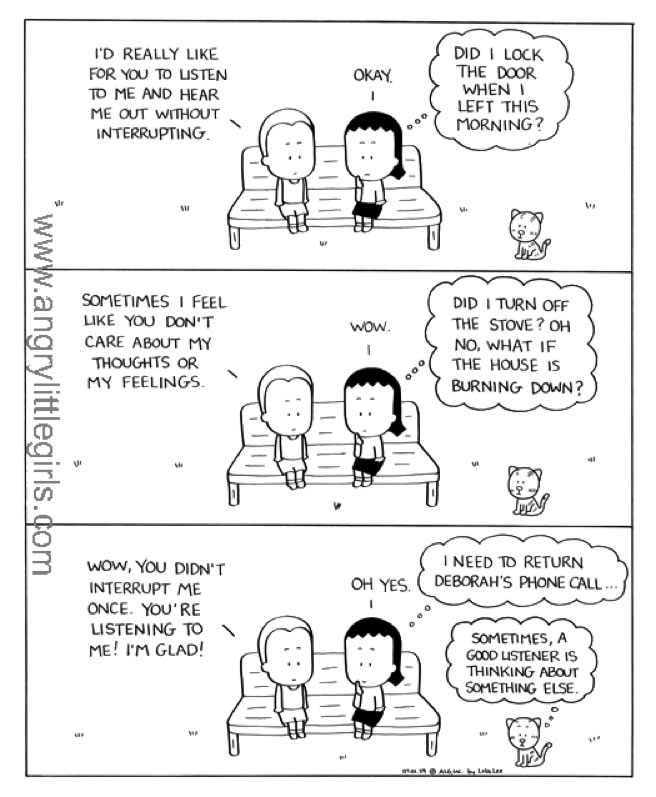
In this lesson, we will learn how and why to paraphrase while listening and taking notes.
Paraphrasing While Listening and Taking Notes
Paraphrasing means restating someone else’s ideas in your own words. Paraphrasing while listening is a little different from paraphrasing while reading. When you paraphrase while reading, you have the opportunity to reread a passage once or multiple times before you paraphrase it. When listen to a lecture, you have one opportunity to take in what the speaker says and paraphrase it in your notes.
Paraphrasing vs. Summarizing
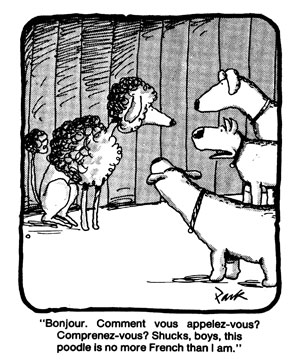
Paraphrasing is different from what you do when you summarize. When you paraphrase, you retain the speaker’s original meaning with greater precision. Consider a paraphrase to be a translation of the speaker’s words, while a summary is just the main idea. For example, imagine you are in a country where you don’t speak the language, but have a translator who speaks both English and the local native language. Your translator asks a person on the street to provide her with the name of the nearest hotel. After a minute of watching gestures and listening to conversation you don’t understand, you ask the translator:
You ask: “Where is the nearest hotel?”
The translator replies: “There is a lovely one just around the corner.” Her reply is a paraphrase. She has more information, such as the fact that it’s a 5 star hotel or it has a great view, but your translator simply paraphrased.
On the other hand, if you said with your limited language skills, “Need hotel, ” and someone replied, understanding that you knew little of the language, “around corner,” that person would be providing a summary so that you would be able get the information you needed.
Paraphrasing by Using Synonyms
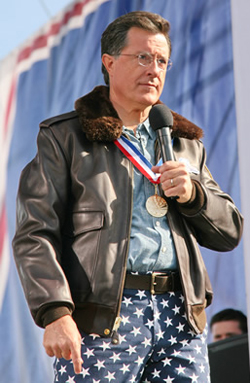 © 2010 Almightyduck
© 2010 AlmightyduckAs you know, a synonym is a word that means the same as another word. When you use synonyms in paraphrasing, try to use shorter synonymous words or phrases for longer phrases. Let’s look at the following quote from comedian Stephen Colbert about the fact that many young people claim to get their news from his show, The Colbert Report.
“I don’t perceive my role as a newsman at all. I’m a comedian from stem to stern. You can cut me open and count the rings of jokes. If people learn something about the news by watching the show, that is incidental to my goal.”
One way to paraphrase this statement as you make notes would be as follows:
Colbert says:
- Not a reporter but a comic
- Teaching world events not his intention
My paraphrase isn’t as elegant as his original statement, but it makes the same point. Notice that I also didn’t use complete sentences. That’s because when you are taking notes during a speech or lecture, you can’t stop to worry about grammar or syntax. Use phrases, abbreviations, and short sentences. For more information about taking notes, see the lesson, “Learning How to Listen and Take Effective Notes.”
Using Quotes and Paraphrasing
Sometimes, you don’t want to paraphrase because the speaker is eloquent and has used the perfect words in his or her speech. That’s okay, but if you quote them, be sure to use quotation marks to let yourself know that these aren’t your words but someone else’s. You might be wondering, “Why? These are my notes. Does it really matter if I attribute them to the speaker?” Yes, because you might use your notes to answer an essay prompt or write a paper, and you need to be able to attribute that eloquent phrase to the original speaker. Use quotes in note-taking sparingly. You will lose track of the conversation if you try to catch a speaker’s words verbatim. However, trying to paraphrase can also cause you to lose time. A blend of paraphrasing and summary may work best in certain situations. For example, instead of paraphrasing Colbert the way we did the first time, you might write:
Colbert: “I’m a comedian. . . . Cut me open and count the rings of jokes.”
You could use this quote to show that when Stephen Colbert makes a serious point, he still jokes.
Now let’s practice paraphrasing and using quotes while you’re listening to a speech.
Watch the YouTube video below of Apple founder Steve Jobs giving the 2005 Commencement Speech at Stanford University.
Watch five or six minutes of the speech. Using your Take Notes Tool, take notes as you listen. When you’re finished, check your understanding to compare your notes with mine. Don’t worry if your notes are not detailed. When I listened to the speech, I was scribbling quickly with a pen on a piece of notebook paper. The key here is to listen well, writing and thinking as you listen.
 © 2008 by Kyro
© 2008 by Kyro
Steve Jobs speaking at a Harvard Commencement.
The notes you are about to see have been transcribed for this lesson, so don’t worry if yours look messier. Pay attention as you read my notes to see where I quoted Jobs and where I paraphrased him. Did you quote the same lines? Don’t worry if you didn’t. Like any skill, learning how to take notes well requires time and practice.
Jobs begins by calling Stanford the finest university in the world. He never graduated; this is closest he’s gotten to a graduation. He’s going to tell 3 stories from life that will connect the dots. He dropped out of Reed College but stuck around for 18 months more. His mother was unwed graduate student. She wanted him adopted by college-educated parents, but at last minute, family decided they wanted girl, so he was taken by family that didn’t have college ed. His mother didn’t want to sign the adoption papers but did when family promised that he would go to college.
He chose a really expensive school and couldn’t figure out why he was in college. Didn’t want to waste parents’ hard-earned money, so dropped out but slept on friends’ floor and was really poor. Sat in on calligraphy class and loved it.
10 years later when he developed the Macintosh computer, it had the typography that he learned in the calligraphy class. You can’t connect dots forward but trust that they will connect. “You must have the confidence to follow your heart . . . will make all the difference.”
Started Apple when he was 20 in a garage with Steve Wozniak. 10 years later a 2 billion dollar company with 4,000 employees. When he was 30 he was fired from the company that he had begun. He felt horrible, lost focus, but he still loved what he did. He decided to start over, “the heaviness of being successful was replaced by the lightness of being a beginner.” It was a creative period in his life. Started Pixar now the most successful animation studio in the world. Wouldn’t have happened if hadn't been fired. “Have to find what you love, have to do great work, and have to love what you do.”
CloseYour Turn: When TED Talks,
You Listen (and Paraphrase)
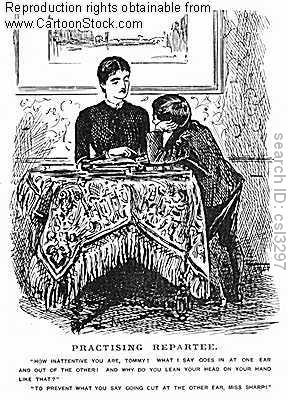
“How inattentive you are, Tommy! What I say goes in one ear and out of the other! And why do you lean your head on your hand like that?”
“To Prevent what you say going out at the other ear, Mrs. Sharp!”
Watch the video of Julian Treasure called
“The 4 Ways Sound Affects Us.” from the TED Talks series.
- Using your Take Notes Tool, take notes using paraphrasing (and quotes when necessary).
- When you are finished taking notes, answer the questions in the short quiz that follows. Use the Take Notes Tool for the quiz too. When you’re finished with the quiz, check your understanding to see the notes I took and the answers to the quiz.
Quiz
- What are the four ways sound affects us?
- Most sound is considered to be accidental and _________?
- Which sounds did the speaker identify as good?
- How does sound affect retail sales?
- Is a noisy workplace good for productivity?
My notes:
- Transform relationship w/sound
- most sound is accidental and unpleasant
- noisy corners
- “relationship w/sound mostly unconscious”
Physiological
- loud bell
- “fight/flight hormone”
- affect heart rate and brainwaves
- surf
- soothing
- “like breathing of sleeping human”
Psychological
- “music most powerful”
- birds- “reassuring” singing OK, stop singing bad
Cognitive
- hard to concentrate with too many noises
- 1/3 as productive in noisy spaces
Behavioral
- move away from unpleasant sound to pleasant
- bad sound damages health
- retail sound “hostile”
- shops lose 28% of sales due to bad music
- designing sounds
- Music powerful recognition + association = power
- 1 sec samples easily recognized “Jaws”
- branding sounds
- nokia ringtone most played sound in world today
- 4 golden rules for commercial sound
- congruent
- appropriate
- valuable
- test it
- Listen consciously and take control
Quiz Answers:
- Physiologically, psychologically, cognitively, and behaviorally
- Unpleasant
- Surf and birds
- Makes them go down
- No
Resources
Resources Used in This Lesson: Bibliography
Treasure, Julian. “The 4 Ways Sound Affects Us.” Filmed July 2009. TED video, 5:47. Posted October 2009.
Jobs, Steve. Speech at Stanford Commencement. Filmed June 12, 2005. Stanford University. YouTube, 15:05. Posted March 8, 2008.